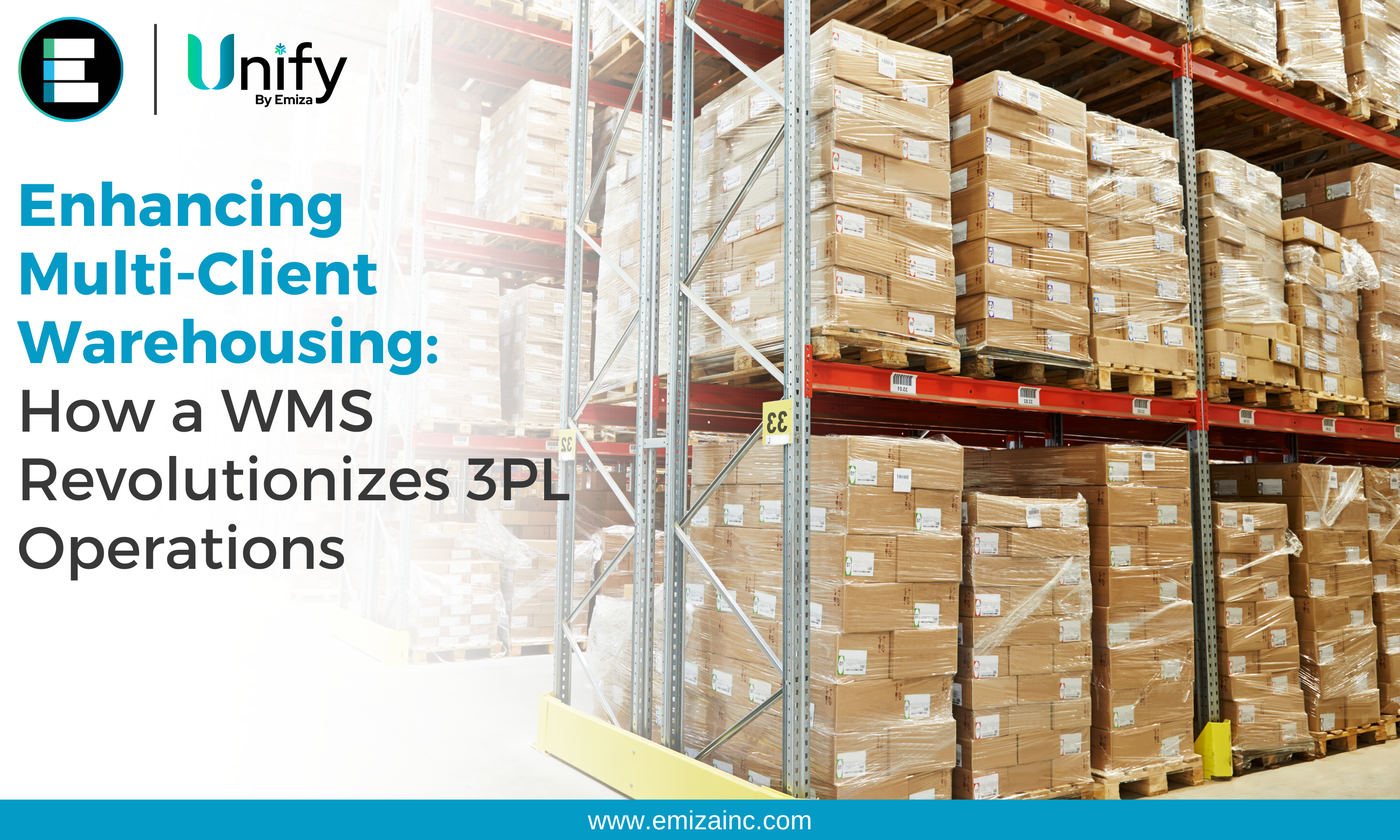Third-party logistics (3PL) providers play a crucial role in efficiently managing supply chains for multiple clients. With the ever-increasing demands for streamlined operations and faster order fulfilment, it becomes imperative for 3PLs to embrace advanced technologies to enhance their warehousing capabilities. One such technology that has revolutionized 3PL operations is the Warehouse Management System (WMS). By implementing a WMS, 3PLs can significantly improve warehouse automation, optimize inventory management, and deliver superior service to their clients. Let’s explore how a WMS can transform multi-client warehousing.
Streamlining Operations with Warehouse Automation System:
One of the primary benefits of integrating a WMS into multi-client warehousing is the automation it brings to various warehouse processes. Traditional manual methods, such as paper-based inventory tracking and manual order picking, are prone to errors and inefficiencies. However, a WMS automates these processes, leading to increased accuracy, productivity, and overall operational efficiency.
Inventory Management: A WMS provides real-time visibility into inventory levels across the warehouse. It enables 3PLs to accurately track the movement of goods, monitors stock levels, and optimize storage space utilization. With automated inventory control, 3PLs can avoid stockouts, prevent overstocking, and improve order fulfilment rates.
Order Processing: The WMS streamlines order processing by automating picking, packing, and shipping activities. It optimizes the picking routes, reducing travel time and improving order accuracy. By eliminating manual errors and accelerating order fulfilment, 3PLs can enhance customer satisfaction and loyalty.
Labour Optimization: By automating repetitive and time-consuming tasks, a WMS allows 3PLs to allocate their labour resources more efficiently. It helps in optimizing workforce productivity, reducing labour costs, and reallocating employees to value-added activities that require human expertise. As a result, the overall efficiency of the warehouse increases, leading to improved service levels.
Optimizing Multi-Client Operations:
Managing multiple clients within a single warehouse can be complex and challenging. However, a WMS offers features specifically designed to address the unique requirements of multi-client warehousing.
Client-Specific Workflows: A WMS enables 3PLs to configure client-specific workflows, ensuring that each client’s unique requirements are met. Whether it’s different picking strategies, labelling preferences, or shipping methods, the WMS can be customized to accommodate these specific needs. This flexibility allows 3PLs to provide tailored services to their clients while maintaining operational efficiency.
Resource Allocation: With a WMS, 3PLs can effectively allocate warehouse resources, such as space, equipment, and labour, to different clients based on their needs and priorities. The system provides real-time visibility into resource availability and utilization, enabling efficient resource planning and allocation. This ensures that clients receive the necessary resources without compromising on service levels.
Reporting and Analytics: A WMS offers robust reporting and analytics capabilities that empower 3PLs to gain insights into warehouse operations and client-specific performance metrics. By analyzing key performance indicators (KPIs) such as order accuracy, on-time delivery, and inventory turnover, 3PLs can identify areas for improvement and make data-driven decisions to enhance overall operational efficiency.
Delivering Superior Service:
By implementing a WMS, 3PLs can elevate their service levels and differentiate themselves in the competitive logistics industry.
Real-Time Visibility: The WMS provides real-time visibility into inventory, order status, and shipment tracking. This visibility allows 3PLs to proactively communicate with their clients, providing accurate and up-to-date information on their inventory and orders. Such transparency fosters trust and strengthens the client-3PL relationship.
Scalability: As the business grows and new clients come on board, a WMS offers scalability to accommodate increased volumes and diverse requirements. It can easily adapt to changing business needs, enabling 3PLs to onboard new clients quickly and seamlessly.
Error Reduction: Manual processes are prone to errors, leading to delays and customer dissatisfaction. By automating warehouse operations with a WMS, 3PLs can significantly reduce errors in order processing, inventory management, and shipping. This results in improved order accuracy, reduced returns, and enhanced customer satisfaction.
Emiza’s WMS
Emiza is actively building capabilities for its Warehouse Management System (WMS) to offer a comprehensive solution for streamlining your business operations with seamless integrations. With Emiza’s evolving WMS, you will have access to a seamlessly connected tech stack, ensuring smooth communication and data exchange between various systems as we continue to enhance its functionalities. The WMS will be designed to integrate with popular marketplaces, facilitating effortless order management and fulfillment once the capabilities are fully developed. Additionally, it will integrate with shipping platforms, enabling efficient shipping processes and real-time tracking to further optimize your operations. Emiza’s WMS aims to meet enterprise-grade requirements by providing robust features and scalability to support your growing business. With Emiza’s forthcoming WMS, you will be able to optimize your warehouse operations and enhance efficiency by harnessing the power of seamless integrations.
Conclusion
In conclusion, the implementation of a Warehouse Management System (WMS) is a game-changer for 3PL operations in multi-client warehousing. By embracing WMS technology, 3PLs can achieve significant improvements in warehouse automation, inventory management, and service delivery. The automation capabilities of a WMS streamline various warehouse processes, leading to increased accuracy and operational efficiency. The system optimizes inventory management, order processing, and labour allocation, resulting in improved productivity and customer satisfaction. Additionally, a WMS addresses the unique challenges of multi-client operations by offering client-specific workflows, resource allocation, and robust reporting and analytics. By integrating a WMS like Emiza’s, 3PLs can further enhance their operations with seamless integrations, real-time visibility, scalability, and error reduction. Ultimately, a WMS revolutionizes 3PL operations, enabling them to meet the demands of the ever-evolving logistics industry and deliver superior service to their clients.
To learn more about how Emiza’s Warehouse Management System can transform your 3PL operations, visit https://emizainc.com/.



